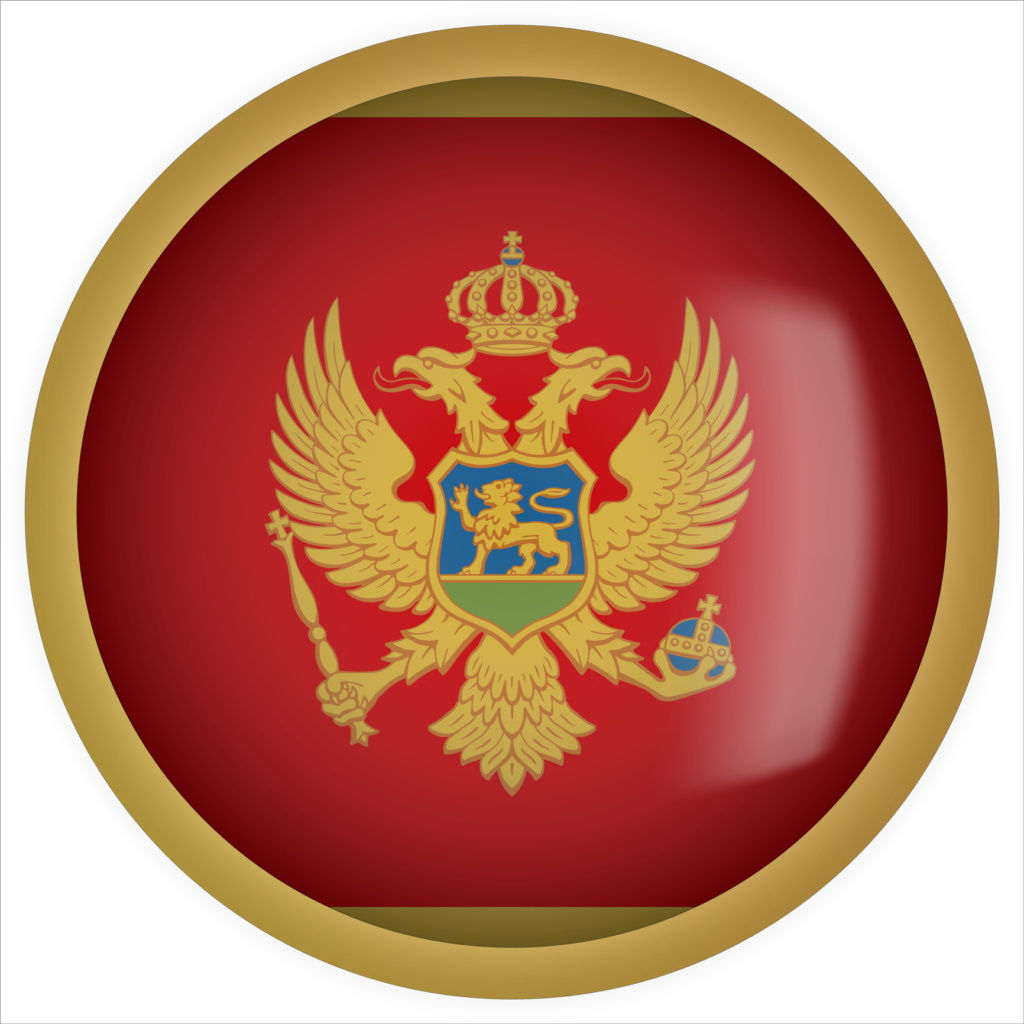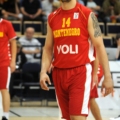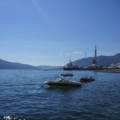Montenegro, situated along the Adriatic coast, is a small country with a millennia-long past as rich as its Balkan sweets. Montenegro’s history spans ancient Illyrian tribes and Roman takeovers to medieval rulers and Ottoman exploits, creating a dynamic patchwork quilt of ethnicities, beliefs, and political upheavals.
Don’t be fooled by its small size; Montenegro has played a significant role in defining the Balkan region and continues to attract history buffs and wanderlust-driven adventurers alike. So pack your time-traveling gear and join us on a journey through Montenegro’s fascinating and brief history.
The brief history starts with the Illyrian tribes in Montenegro
Montenegro’s historical breadcrumbs, which point to the existence of early human settlements, date back more than 180,000 years! Our first solid look at the ethnic mix of these early Montenegrin settlers dates back to the Early Bronze Age (2000-1500 BC). Archaeological finds have revealed that the Illyrians called this country home. Fast forward to the early Iron Age (1000-500 BC), and the Illyrians had built a tribal network that eventually grew into a full-fledged state in Montenegro.
But alas, the Illyrian state was not meant to last. As it faded into history, the Roman population began to migrate into the area, kicking off a period of Romanization that saw Illyrian tribes embracing Roman customs. This cultural mash-up was especially intense as the 3rd century waved goodbye and the 4th century rolled into town. So, buckle up as we continue to delve into Montenegro’s multifaceted past in this informative, slightly whimsical adventure.

Montenegro in the Middle Ages
As the curtains closed on the 4th century, the Roman Empire split into two fabulous factions: Eastern and Western. Modern-day Montenegro found itself strutting its stuff in the Eastern Roman Empire, which later earned the title of the Byzantine Empire. But change was afoot! In the waning years of the 6th century, the Slavs decided to crash the Byzantine party, making themselves at home on its territory.
By the time the 7th century rolled around, Montenegro’s ancestors were mingling on the Balkan Peninsula, where a sophisticated Illyrian-Romanian population had already put down roots in a happening spot known as Doclea. The Byzantine Emperor Constantine Porphyrogenitus dubbed Montenegro’s ancestors “Docleans,” revealing that they got their snazzy moniker by living it up around the Roman city of Doclea.
Picture Doclea as a scenic hotspot nestled near Lake Skadar and its surrounding mountains—a true gem of a locale. And who was the lucky fellow reigning over this paradise? None other than Prince Vladimir, the first of his name.
The history lesson continues and in 1042, after flexing its independence muscles, Montenegro was crowned a kingdom in 1077—making it one of the Balkans’ earliest independent states. A true trendsetter! Doclea then got a chic new name, Zeta, which translates to “reapers” in Old Slavic. But it wasn’t all smooth sailing: after the first Vojisavljevic dynasty’s rulers kicked the bucket, Serbia swooped in and called the shots over Zeta for a solid two centuries.
By the time the 14th century rolled in, the Balsic and Crnojevic dynasties took Zeta under their wing and transformed it into an independent feudal state, stretching its territory bit by bit. However, when the Ottoman army came knocking with some serious firepower, the Crnojevic dynasty decided to high-tail it to Lovcen mountain. Ivan Crnojevic, not one to shy away from a challenge, set up camp in Cetinje, building a swanky castle and monastery that became a symbol of spiritual and political freedom. It was during his reign that the name “Montenegro” really caught on.
Ivan’s son, Djuradj Crnojevic, may have had a short stint as ruler, but he sure left a lasting impression. Under his watch in 1493, the Balkans got their very first printing press! And just a year later, in 1494, the trailblazing book “Octoechos” was hot off the press.
Under the Ottoman reign
Alas, Montenegro‘s luck ran out in 1496 when the Ottomans finally conquered the feisty nation. In the early years of Ottoman rule, Montenegrin tribes started to take shape. Each tribe, made up of several brotherhoods, had its own slice of land, communal property, moral codes, and institutions. Talk about a tight-knit community!
As with their Balkan neighbors, Montenegrins experienced an intense, drawn-out process of Islamization. The 17th century saw the zenith of this transformation, covering the entirety of present-day Montenegro. Amidst these changes, the heads of the Montenegrin church—Metropolitans—rose to prominence, becoming the nation’s movers and shakers. Alongside them, the General Assembly of Montenegro and the Assembly of Chiefs held court.
In 1697, at the General Assembly of Montenegro, a chap named Danilo Petrović from the fanciest Montenegrin brotherhood snagged the title of Montenegrin Metropolitan. Not only that, but he also kicked off the fourth Montenegrin Petrović-Njegoš dynasty, which—with the occasional hiccup—ruled Montenegro until 1918.
Despite being a small fry in terms of numbers, the Montenegrin folks managed to score some major wins against the Ottomans. In 1796, under Petar I‘s reign, the Montenegrin army sent the Ottomans packing in the epic battles of Martinici and Krusi. Later, during Prince Danilo‘s rule, they celebrated another victory at the Battle of Grahovac. But wait, there’s more! Under Prince Danilo and subsequently King Nikola, Montenegro triumphed in the Battle of Vucji Do and the Battle of Fundina.
King Nikola was quite the multitasker, helping Montenegro hit some major political milestones. Under his watchful eye, Montenegro reclaimed the cities of Bar and Ulcinj, securing a sweet slice of the Adriatic coast. He also liberated Podgorica, Kolasin, and Niksic. And if that wasn’t enough, Montenegro finally got a full thumbs-up from the international community at the Berlin Congress in 1878.
Modern history of Montenegro
The 20th century was a bit of a rough patch for Montenegro, as it lost its independence and vanished from the political map of Europe like a magician’s rabbit. When the First World War reared its ugly head, Montenegro teamed up with Serbia and their pals. But in 1916, after waving the white flag to Austro-Hungarian forces, King Nicholas packed his bags and hit the road to exile. He hung out in Italy for a bit before making his way to France.
Read Also: Montenegro Flag: Design, Meaning, and Symbolism
Sadly, the king and his government weren’t able to put a dent in Montenegro‘s fate. In 1918, Serbia gobbled up Montenegro like a tasty snack, causing the country to lose everything it had worked so hard for: statehood, army, and dynasty. Montenegro was then folded into the newly minted Kingdom of Serbs, Croats, and Slovenes, which later changed its name to the Kingdom of Yugoslavia.

World War II
When the Kingdom of Yugoslavia fell under the boot of fascist Germany during the Second World War, Montenegro showed the world that its people’s freedom-loving spirit hadn’t vanished. A major point in the history of Montenegro,
So, during World War II, Italy decided to occupy Montenegro, which was part of Yugoslavia at the time. But the Communist Party of Yugoslavia was not having it, and they started a rebellion against the Italian occupation forces. They called it the 13 July Uprising, and it was a mix of communists and former Yugoslav Army officers from Montenegro.
The rebels managed to take almost all of Montenegro in just three weeks, which was pretty impressive. But then the Italians came back with a vengeance, bringing in a bunch of troops and squashing the rebellion in just six weeks. The rebels couldn’t agree on the strategy, with the nationalists wanting to protect mountain villages and the communists wanting to fight head-on. This led to a split among the rebels and their ultimate defeat.
The defeat of the communist forces during the Battle of Pljevlja, combined with their policy of terrorizing people they perceived as enemies, led to more conflict between the communist and nationalist insurgents in Montenegro. The nationalists teamed up with the Italians and defeated the remaining Partisan forces in Montenegro.
So, in summary, the 13 July Uprising was a rebellion against Italian occupation that was initially successful but ultimately failed due to internal disagreements and a superior enemy force.

1945 – 1992
After the Second World War, Montenegro upped its legal statehood game, becoming one of the six equal republics in the Yugoslav Federation.
From 1945 to 1992, Montenegro was part of Yugoslavia, which was a big deal at the time. It was the smallest republic in the federation and had the lowest population, but it didn’t let that hold it back. Montenegro became economically stronger than ever, thanks to federal funds as an under-developed republic, and even became a tourist destination. But, like any good story, there were some bumps in the road.
During this time, there were some political eliminations that went down. The leader of the Greens, Krsto Zrnov Popović, was assassinated in 1947, and 10 years later, the last Montenegrin Chetnik, Vladimir Šipčić, was also murdered. Montenegrin communists like Veljko Vlahović, Svetozar Vukmanović-Tempo, Vladimir Popović, and Jovo Kapicić held key positions in the federal government of Yugoslavia.
But then in 1948, Yugoslavia faced the Tito-Stalin split, which caused a lot of tension between Yugoslavia and the USSR. It also caused a lot of political turmoil within Montenegro, with pro-Soviet communists facing prosecution and imprisonment. Many Montenegrins, who were traditionally loyal to Russia, declared themselves as Soviet-orientated. This political split led to the downfall of many important communist leaders, including Montenegrins Arso Jovanović and Vlado Dapčević. Many innocent people were imprisoned during this time, regardless of their nationality.
Despite the political turmoil, Montenegro underwent infrastructural rejuvenation thanks to federal funding. The historic capital, Cetinje, was replaced with Podgorica, which became the biggest city in the republic. Youth work actions built a railway between Podgorica and Nikšić, as well as an embankment over Skadar lake linking the capital with the major port of Bar. The ports of Kotor, Risan, and Tivat also faced infrastructural improvement. Montenegro’s industrialization was demonstrated through the founding of companies like Obod, a steel mill, and Trebjesa brewery in Nikšić, and the Podgorica Aluminium Plant in 1969.
So, in summary, Montenegro thrived under Yugoslavia, despite some political turmoil. It used federal funding to rebuild its infrastructure and become an even better tourist destination.
Montenegro history in modern times
When the 20th century came to a tumultuous close and the SFR Yugoslavia went kaput, Montenegro stuck with Serbia in a tag team called the state of Serbia and Montenegro.
In 2006, Montenegro held a referendum to decide whether to stay in a union with Serbia or become an independent country. The vote was narrowly passed by 55.5% of voters, just above the required 55% threshold, allowing Montenegro to become an independent state.
On May 31, the referendum commission officially confirmed the results, verifying that 55.5% of Montenegrin voters had voted in favor of independence. Following this, the parliament held a special session on the same day, which incorporated the referendum’s results into a declaration of independence. The Assembly of the Republic of Montenegro made it all official on June 3, 2006.
After Montenegro’s declaration of independence, the government of Serbia declared itself the legal and political successor of Serbia and Montenegro, which was the previous state union between the two countries. However, the international community recognized Montenegro’s independence, including the United States, China, and Russia. Montenegro has since been a sovereign state and a member of the United Nations.
Since 2006, Montenegro has enjoyed the perks of being an independent state and joined the NATO alliance in 2017.
To sum things up, the brief history of Montenegro is a wild roller coaster ride of resilience, survival, and adaptation. Despite its whirlwind past, the country has morphed into a delightful fusion of old-world allure and modern flair. Montenegro’s stunning Adriatic coastline and rugged mountains make a picture-perfect backdrop for its rich cultural heritage. As we reflect on Montenegro’s story, it’s clear that its past has left an indelible mark on its present and will continue to shape its future. Whether you’re uncovering ancient ruins, visiting storied landmarks, or just immersing yourself in the local scene, Montenegro is a country that’ll leave a lasting impression on anyone who drops by.



